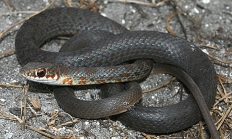Regulations to protect summer steelhead in effect on Deschutes, John Day, Eagle Creek
July 2, 2025 THE DALLES, Ore.—With another poor forecast for Columbia Basin summer steelhead runs this year, protective regulations are again in effect on some tributaries (Deschutes, John Day, Eagle Creek). The daily adult salmon and steelhead bag limit may not include more than one hatchery…




















